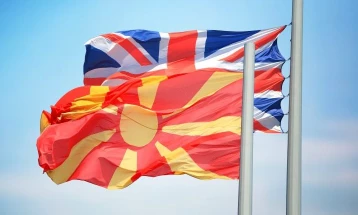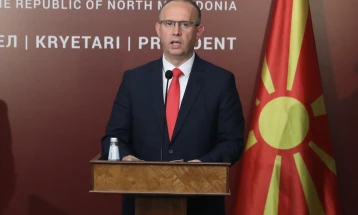North Macedonia has double the land needed to meet energy demand using renewables: study
- A study by a team of experts from the Macedonian Academy of Sciences and Arts (MANU), global environmental organization “The Nature Conservancy” and civil society organization “Eko-svest” identified that North Macedonia has double the land needed to meet its electricity needs from renewable sources without unduly impacting nature and local communities.
- Post By Angel Dimoski
- 13:56, 6 October, 2023

Skopje, 6 October 2023 (MIA) – A study by a team of experts from the Macedonian Academy of Sciences and Arts (MANU), global environmental organization “The Nature Conservancy” and civil society organization “Eko-svest” identified that North Macedonia has double the land needed to meet its electricity demand from renewable sources without unduly impacting nature and local communities.
The Macedonian energy sector has a potential of at least 11 GW of photovoltaic energy, and 0.35 GW of wind energy from sites on brownfields and barren land. These conditions would enable the country to become a leader in the regional efforts for decarbonization, according to the “Accelerating a Renewable Future: Using Brownfields and Barren Lands for Wind and Solar Energy Siting in North Macedonia” study presented at a conference Friday.
The study published Friday resulted in a map of sustainable locations, mainly brownfields and barren lands, for the development of renewable sources of energy in the country. If only a half of these priority locations were built out, they could produce 7.7 terawatt-hours of electricity per year, it said.
“A significant example of this is the Oslomej solar park, built on a former lignite open pit mining site, which is already partly operational and will have an installed capacity of 120 MW when fully completed,” said MANU’s scientific collaborator, Dr. Aleksandar Dedinec, at Friday’s conference.
Dedinec stressed that the results of the study provide opportunities not only for policymakers, but also for investors.
As part of the Powering Past Coal Alliance, North Macedonia has committed to phase out coal by 2027. These ambitious goals call for an accelerated development of renewable sources of energy on locations without significant biodiversity, which don’t have high environmental value, and aren’t critical for the well-being of local communities.
Igor Vejnović from The Nature Conservancy said the maps should be integrated in future versions of key strategic documents such as the country’s energy Strategy, the National Energy and Climate Plan (NECP) and the plans for auctions in the field of renewable sources of energy in certain locations.
Photo: MIA







